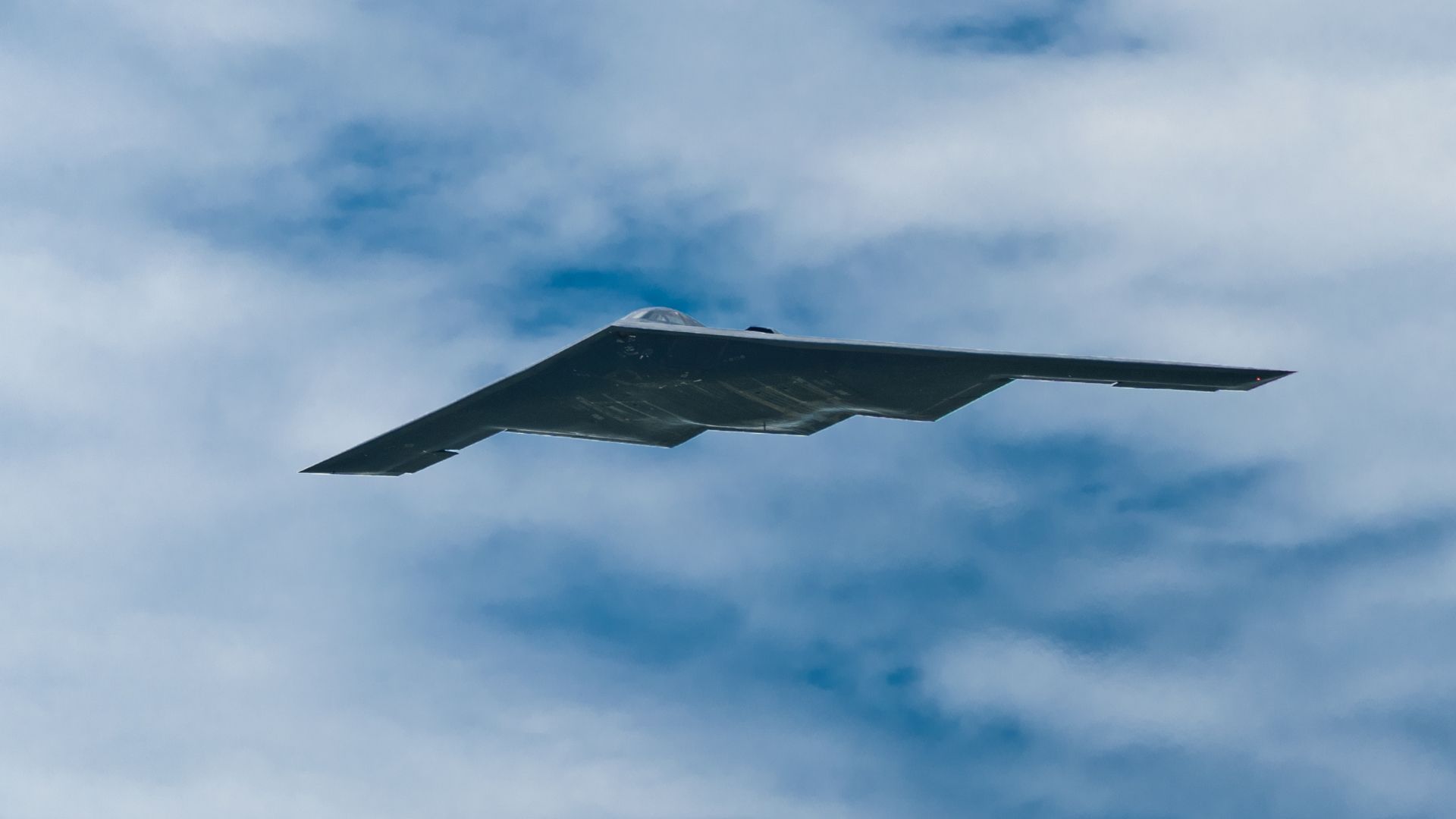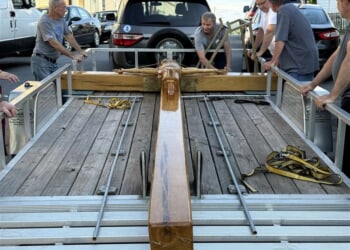
New satellite images released on June 29 reveal significant destruction at Iran’s Fordow nuclear site, following a series of U.S.-led airstrikes conducted as part of “Operation Midnight Hammer.”
The high-resolution imagery appears to support claims by U.S. officials, including President Donald Trump, that the strikes caused substantial and possibly irreversible damage to one of Iran’s most heavily fortified underground nuclear facilities.
The operation, carried out on June 22, involved a series of coordinated airstrikes led by B-2 stealth bombers.
Trump’s Sovereign Wealth Fund: What Could It Mean For Your Money?
A total of 14 bunker-busting bombs were dropped on three Iranian nuclear sites, including the Fordow Fuel Enrichment Plant, which is located within a mountain near Qom, approximately 60 miles southwest of Tehran.
Independent journalist Catherine Herridge posted details of the new satellite imagery on social media.
According to Herridge, the images show ongoing activity at and near ventilation shafts and other visible openings in the terrain resulting from the airstrikes.
“New high-resolution satellite imagery today (June 29) reveals ongoing activity at and near the ventilation shafts and holes caused by last week’s airstrikes on the Fordow fuel enrichment complex in Iran,” Herridge wrote.
“On today’s imagery, an excavator and several personnel are positioned immediately next to the northern shaft on the ridge above the underground complex. The crane appears to be operating at the entrance to the shaft/hole. Several additional vehicles are also seen below the ridge and are parked along the access path that was built to access the site.”
NEW FORDOW SATELLITE IMAGES
Ongoing activity includes cranes, excavators at entrances and shafts
VIA 📷 @maxar
Collected June 29
“…new high-resolution satellite imagery today (June 29th) that reveals ongoing activity at and near the ventilation shafts and holes caused by… pic.twitter.com/MpjTxTU7LV
— Catherine Herridge (@C__Herridge) June 29, 2025
This Could Be the Most Important Video Gun Owners Watch All Year
The imagery suggests Iran is actively working to assess and possibly repair the damage inflicted during the U.S. operation.
NEW SATELLITE IMAGES FROM FORDOW show activity near bombed ventilation shafts. “MAXAR collected new high-resolution satellite imagery today (June 29th) that reveals ongoing activity at and near the ventilation shafts and holes caused by last week’s airstrikes on the Fordow fuel… pic.twitter.com/GMDl08vYTi
— Jennifer Griffin (@JenGriffinFNC) June 29, 2025
While Iranian officials have not publicly confirmed the extent of the damage to the Fordow facility, U.S. military leadership maintains that the impact was severe.
Gen. Dan Caine, chairman of the Joint Chiefs of Staff, stated during a Pentagon briefing last Sunday that all three targeted nuclear sites in Iran “sustained extremely severe damage and destruction.”
However, he acknowledged that a full assessment would require time.
Satellite analysis from June 23 showed six large craters and scattered debris across the Fordow site.
The same day, Israeli officials confirmed they had conducted a secondary strike aimed at infrastructure near the facility, including roads used for transporting materials and personnel.
Iranian officials later confirmed the Israeli strike but have not provided further updates on the resulting damage.
The Fordow site has long been a focus of concern for U.S. and allied intelligence agencies due to its hardened location deep within a mountain and its suspected role in uranium enrichment efforts.
The site is considered a key component of Iran’s nuclear program.
The recent attacks were intended to delay or disable Iran’s ability to develop a nuclear weapon.
While exact estimates of the facility’s current condition remain classified, the visible destruction from aerial surveillance and Iran’s response activity suggest that the strikes disrupted operations significantly.
Iran has not publicly detailed what was inside the damaged tunnels or whether any enrichment centrifuges survived the bombing.
Efforts to excavate the site are ongoing, as shown by the presence of heavy machinery and work crews at the damaged shafts.
The Biden-Harris administration had previously pursued diplomatic approaches toward Iran’s nuclear program, but under the current administration, the U.S. military response marked a shift toward direct action in preventing potential nuclear proliferation in the region.
Whether or not Iran can salvage any part of the facility remains uncertain.
Defense officials have not ruled out the possibility of follow-up strikes should Iran attempt to restart operations at the site.
The Department of Defense has not issued further comment on the potential for additional action, but White House officials reiterated that U.S. policy remains committed to ensuring Iran does not acquire a nuclear weapon.

![U.S. Strikes Iranian Nuclear Sites, Trump Declares Fordow Facility ‘Obliterated’ [WATCH]](https://www.right2024.com/wp-content/uploads/2025/06/US-Strikes-Iranian-Nuclear-Sites-Trump-Declares-Fordow-Facility-‘Obliterated-750x375.jpg)


![‘It’s a Recipe for a Hundred Years of National Dominance’: Stephen Miller [WATCH]](https://www.right2024.com/wp-content/uploads/2025/05/Stephen-Miller-Completely-Obliterates-CNN-Host-Over-Her-Illegal-Immigration-350x250.jpg)
![Trump Posts Hilarious Pope Meme, Leftists Immediately Melt Down [WATCH]](https://www.right2024.com/wp-content/uploads/2025/05/Trump-Posts-Hilarious-Pope-Meme-Leftists-Immediately-Melt-Down-WATCH-350x250.jpg)

![Wild Road Rage Brawl Erupts in Milwaukee [WATCH]](https://www.right2024.com/wp-content/uploads/2025/05/Road-Rage-Turns-Violent-in-Oregon-Minivan-Mows-Down-Motorcyclist-350x250.jpg)


![Karoline Leavitt Calls for Jill Biden to Answer for Joe's Cognitive Decline Cover-Up [WATCH]](https://www.right2024.com/wp-content/uploads/2025/05/Karoline-Leavitt-Calls-for-Jill-Biden-to-Answer-for-Joes-350x250.jpg)
![Bessent Exposes Media Lies About April’s Stock Market Performance [WATCH]](https://www.right2024.com/wp-content/uploads/2025/04/Bessent-Exposes-Media-Lies-About-Aprils-Stock-Market-Performance-WATCH-350x250.jpg)





